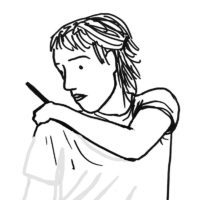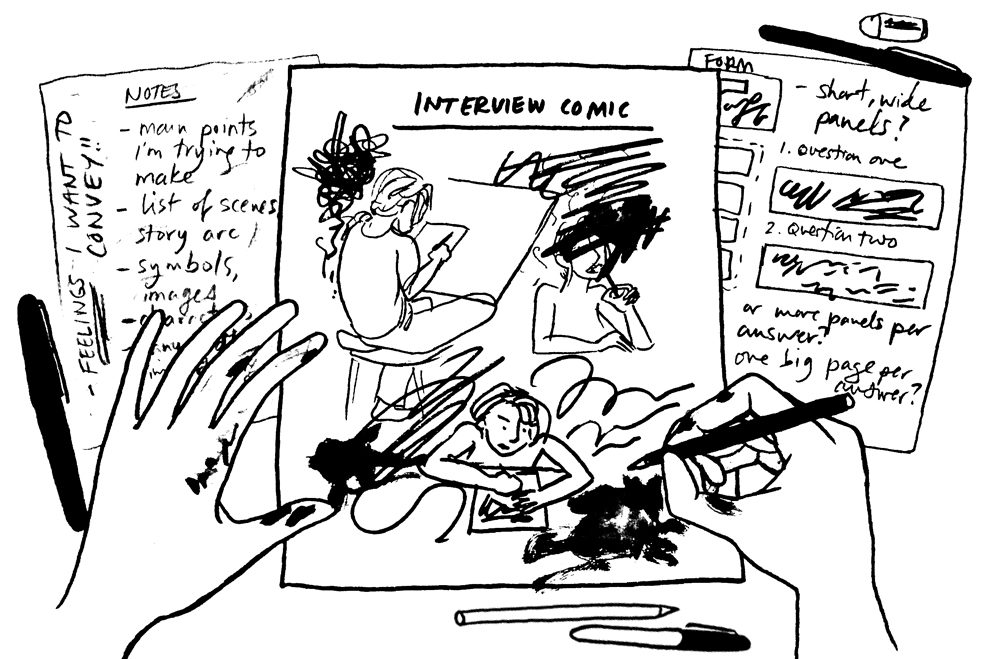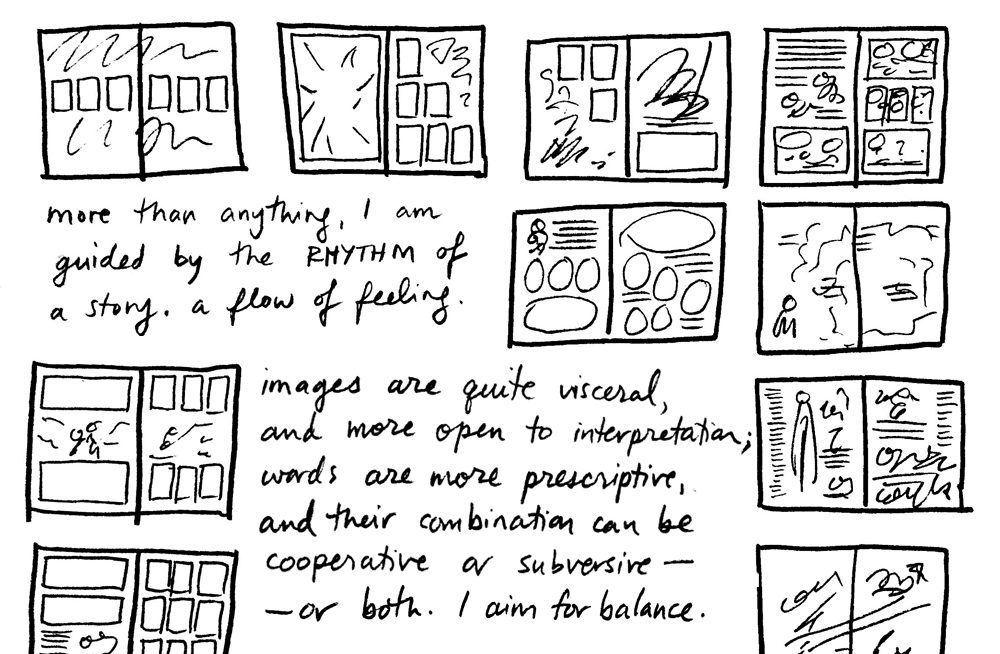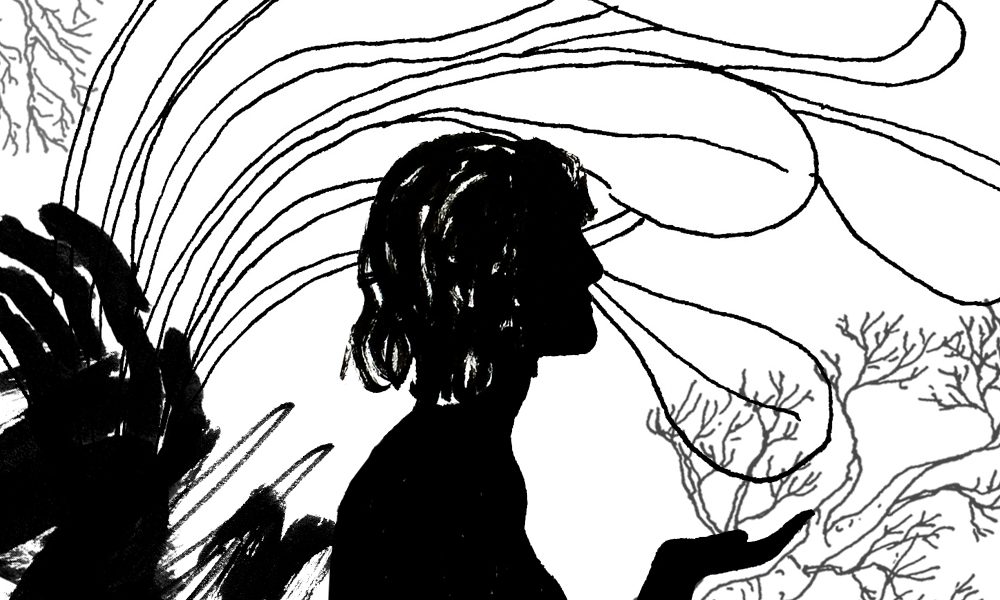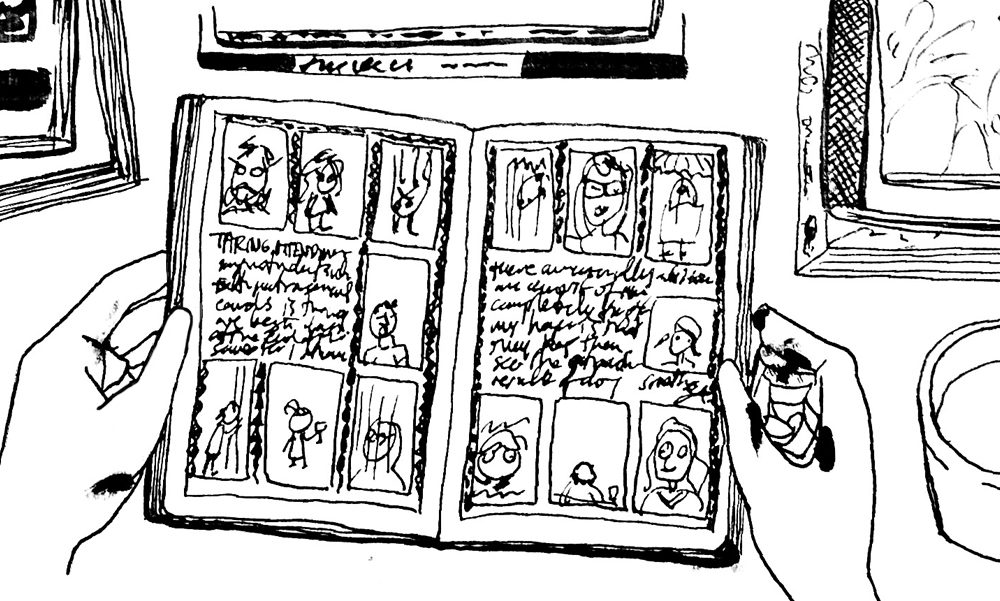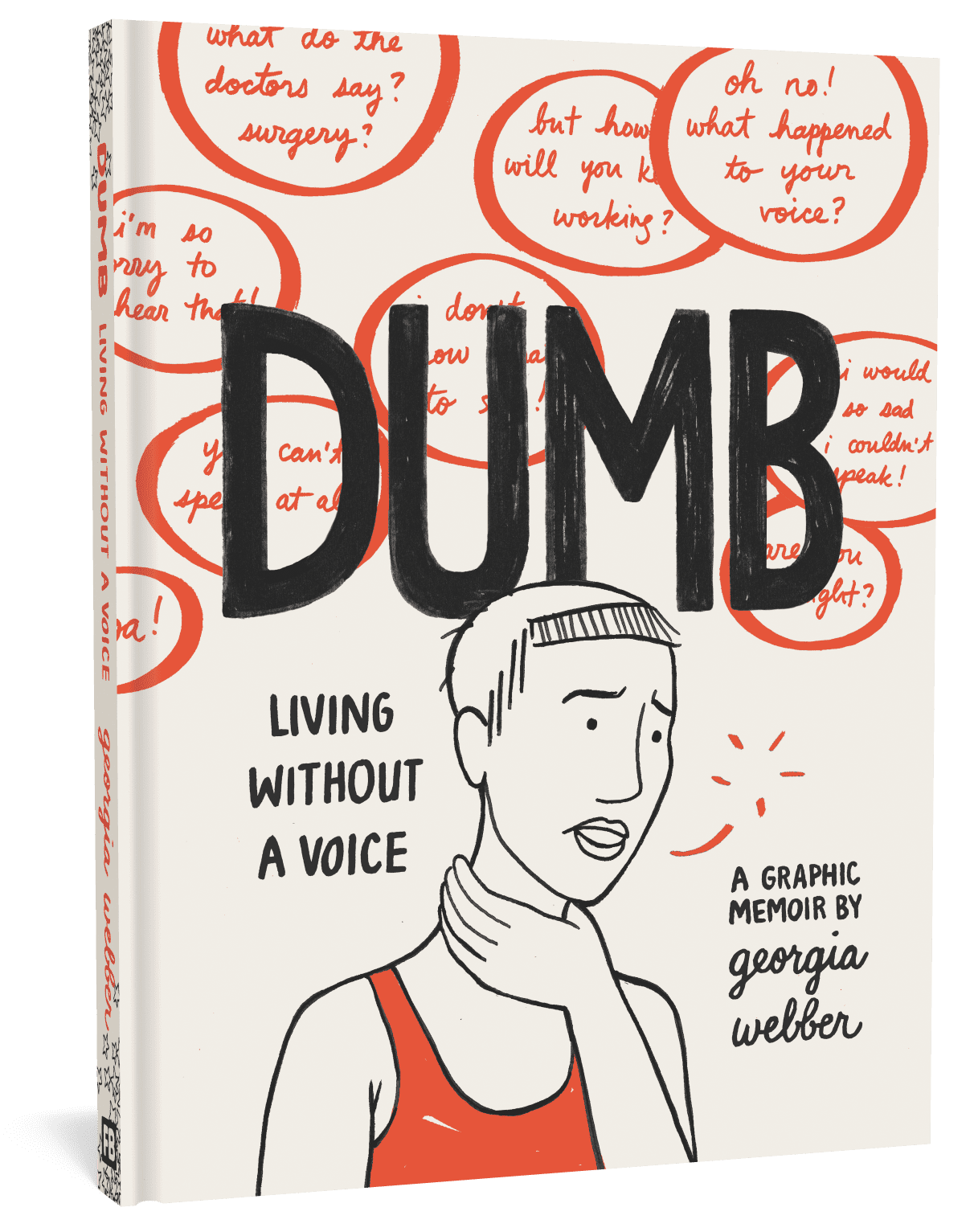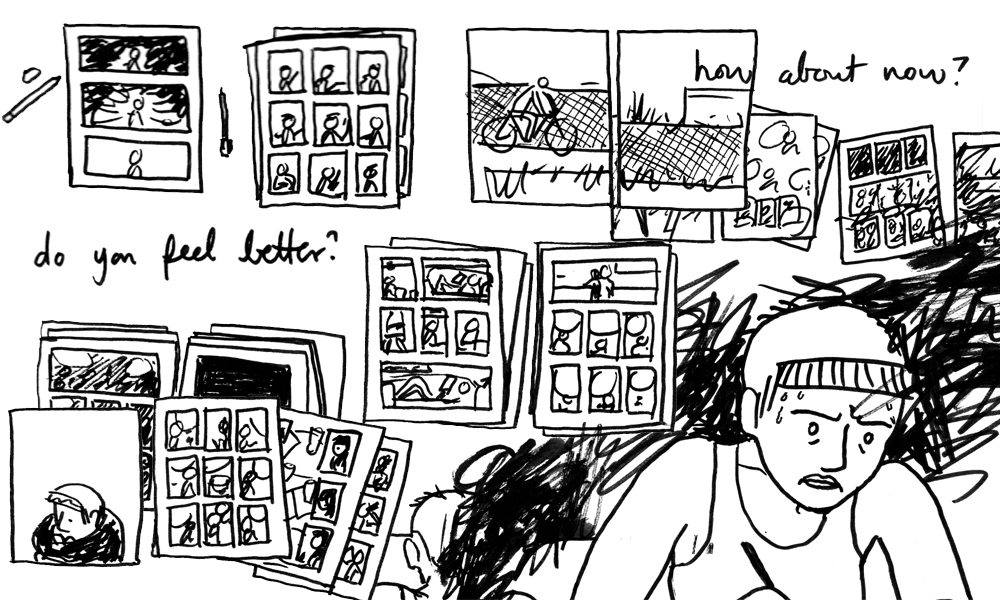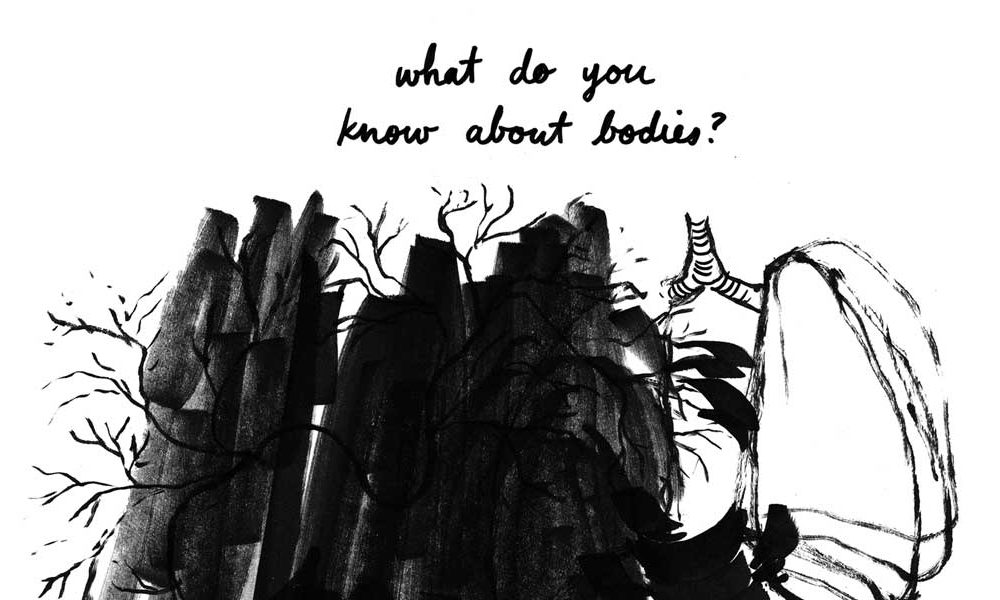Georgia Webber is in her twenties in Montreal, working in a café, helping people with their bikes at the local co-op, and hanging out with friends, when a mysterious throat injury makes it painful to speak.
Our voices are the bridges between our inner and outer worlds, and the average person says seven thousand words throughout the day. Words are a big part of how we connect with people. So, when Webber finds out she has to protect her voice, things change in a big way. She has to find a new, less vocal job. She has to convey her situation to friends and strangers every day, over and over again.
Dumb: Living Without a Voice, Georgia Webber’s graphic memoir, was published by Fantagraphics in August and explores how we connect with other people, and how, when we aren’t able to speak, we move beyond speaking. A comics artist, writer, and editor, Webber lives in southern Ontario. Her work focuses on art’s role with health.
***
The Rumpus: I’ve never been a graphic artist, but I love the idea of having a more visual creative process. What’s your process for putting together the book look like?
Webber: Well, I drew you a picture! It doesn’t convey sequence, and that’s because my process is less-than-linear. During the conception of a story, I always have one piece of paper filled with a list of what I want to say, and ideas for how I want to say it. From that list, I make a rough thumbnail version of the whole story. It looks different depending on the medium in which the work will be displayed. For example, when a comic is intended for print, I draw rectangles that represent the spread of an open book or magazine, and I put those rectangles next to one another in a row, representing the numbers of spreads and pages that the comic will occupy when it’s finished. This way I can see the whole piece at once, place my ideas in an order. From dense moments to spacious ones, dark images to light, text-heavy sequences to wordless sections—the reading experience of the work needs to provide the meaning I intend just as much as the content itself. In comics, there are infinite ways for tone, flow, volume, pitch, and rhythm to be conveyed by color, line, layout, light, shapes, characters, environments, emanata, any combination therein. When I scribble out the layout, I can read the rhythm of the story, and then make each page more precise from there.
Rumpus: How does drawing your way through a storyline feel? What I mean is, how does it feel to create these stories? Jamel Brinkley says writing a short story “feels like my arms are being pulled in two different directions and like I’m walking in pitch darkness.” What does drawing feel like for you?
Webber: For me, drawing is another way to write. After collecting my thoughts into a list and scribbling out how they will flow into each other in my layout, then I get to write and draw each page and that’s where it feels like writing the most. Each image is communicating with the panels next to it, with the whole idea of the page, and with the story. I have to choose the right words, find their right places. It feels like doing a one-thousand piece jigsaw puzzle; I know I can do it, but it takes me a really long time and requires a mix of intuition and methodical trial and error.
Rumpus: How big are you on planning where the story goes?
Webber: I need to know what I’m saying with the piece, but not how it ends. If I’ve nurtured a strong root, then I like to be a part of the leaves unfurling, and let the blossoms take shape naturally. For me, this means that I read what I’ve just created to get a feel for what comes next. I might keep going with my plan, or add three new pages, or just cut straight to the next part. It’s a collaboration between the Georgia who writes and the Georgia who reads.
Rumpus: How do you like to interact with artists and writers you like on a daily basis? Do you have preferred ways to receive content (library books, following people on Instagram, buying books from a certain press, subscriptions)?
Webber: The library is my favorite! I’ve always been broke, but for many years I also felt broke with my time. Couldn’t afford books, or the time to enjoy them. Recently I started using the incredible resource that is the Toronto Public Library. I LOVE visiting different branches and browsing their comics section—I can follow any hint of curiosity I feel about a book, and comics are generally quick enough that I can take a book out, read it, and return it in the same day if I want to. Library A+!
I also love the subscription model that some publishers like Retrofit and Uncivilized use. I’ve met a lot of people who say they know my comics just because they had a subscription, and my work arrived in the mail (from Retrofit)! It’s a sweet way to discover new artists from a publisher whose taste you trust.
Festivals are also really important for me to find new work. I worked for the Toronto Comic Arts Festival for a few years, and every spring I would be flush with joy and excitement and pride at all the new and beautiful work my friends had created, and new work that was sure to reach me in some way. Now I find festivals to be a major strain on my energy because of my voice pain, but I still find time to go and seek out creators from all over the world who are only here for one weekend a year.
Rumpus: What was the hardest part of writing and drawing your book?
Webber: I created a lot of internal pressure for myself when creating my book, and it made the process quite painful at times. The most surprising difficulty was when my hand pain began. One day I was at work, and the next I was at home, my hands in horrible pain, at a loss for what to do with myself. I sought help, tried to rest and wait it out, but I didn’t wait that long—it was so similar to the situation with my voice pain that I knew right away what I would have to do. I gave up writing and drawing, crafting, typing, anything that was non-essential—so basically I just cooked for myself. I stopped making Dumb. I started meditating and reading and became obsessed with understanding health and the many ways we reach for it. When I finally regained the ability to draw without constant pain (I’m still careful), I dove back into finishing Dumb, and I was wholly unprepared for what that would do to my emotional state. I wasn’t ready to revisit those pains, that frame of mind, and I wish I had put more supports in place before I began. It was a rough couple of months drawing the end of the book, and then it was done and I had to pick up the pieces, mingling my pride of accomplishment with self-scorn for debasing my health to do it.
Rumpus: Are you working on another project? What’s next for you?
Webber: From that deep health dive I returned with an enduring passion for all bodily pursuits. Where my body and my pains have always caused doctors and alternative health care providers to scratch their heads, some really smart people crossed my path and started to explain trauma to me, and gave me books to read about it. It was a revelation. After so many years of confusion and mystery and doubt, I finally saw my experience reflected on the page—it was a relief. Now I’m very trauma-savvy, having read as many books on the subject as I could find, digging into embryology and birth experiences, energy work, and mind-body continuum practices, but I find myself often wishing that others had access to what I know. Operating a trauma-informed perspective is my new normal. Instead of assigning all my friends and family a twenty-book reading list, I decided to write one book that would convey a useful understanding of trauma and a trauma-inclusive worldview—and make an experimental comic while I’m at it. The project is called Dark Whole, and I anticipate another year or two of working on it. Keep an eye out for it!
***
Illustrations provided courtesy of and © Georgia Webber.
